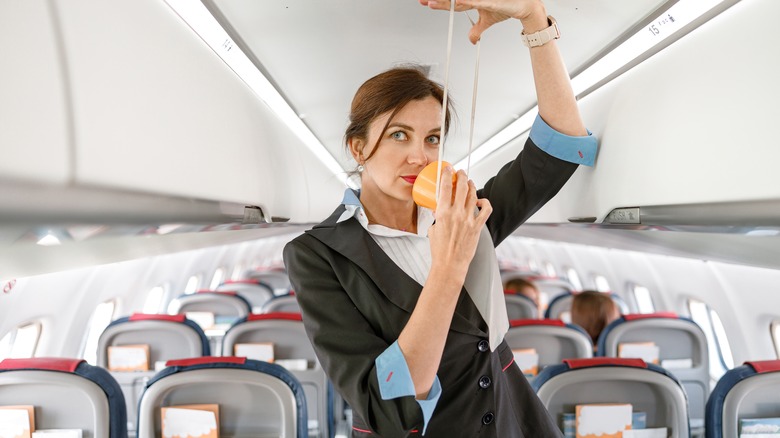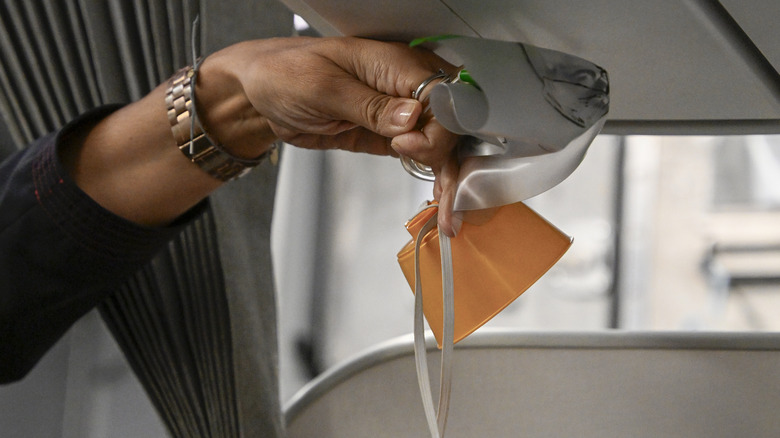The Nerve-Racking Reality About How Long Airplane Oxygen Masks Really Last
We may receive a commission on purchases made from links.
If you're about to take a flight, the likelihood is that you're going to be completely safe. You may deal with the unspoken etiquette around reclining your seat on a plane or whether your in-flight meal will reach you before it gets cold. While it's common to have a kid kicking your seat or wonder why your plane's overhead bin space runs out so fast, you may never have experienced a drop in cabin pressure, causing the oxygen masks to fall from above. This is mentioned in every safety briefing, but you may not know much about them, other than that they don't inflate completely. One fact that may not make you feel super comfortable is that the masks only have around 15 minutes' worth of oxygen. However, the reality around that fact is much less frightening than it sounds.
If the plane's oxygen masks fall when the cabin pressure drops, your job is to put it on right away and breathe normally. The pilot will immediately put on their mask and then fly the plane to a lower altitude below 10,000 feet, where you can breathe as usual. This process is usually done in less than the amount of time it would take to run out of oxygen. However, you should still know everything you can about why the masks are important and why you're told to put on your own before assisting others.
Why you should put on your oxygen mask immediately if it drops on a plane
Of course, it's going to be scary when the oxygen masks drop — it's not exactly a situation you deal with during your daily life. As much as you can, stay calm. However, you should put the mask on immediately if it appears. If cabin pressure drops, it can cause hypoxia, which is caused by a lack of oxygen in the brain. This cognitive impairment can happen within a minute if you're at a high altitude, particularly above 35,000 feet. That's also why they tell you to put on your own mask before assisting others. Hypoxia can be life-threatening, so this warning is important. You can't help anyone else effectively when you're dealing with the physical effects of this condition. Follow the instructions from the flight attendant so you and those around you can remain safe.
If knowing what to do isn't enough to ease your nerves about flying, there are some other things that can help keep you calm before and during your flight. Check out the Fly Calmly app, which is a game changer for nervous fliers, or the Headspace app. As silly as this may sound, you can also get a children's book about how planes fly, like Stephen Walmsley's "How Do Planes Fly: A Beginner's Guide to How Planes Work," so you can get a basic understanding of the concept without all the technical jargon. Finally, if your airline has one, try out their in-flight entertainment meditation programs or in-flight yoga videos to help keep you relaxed.

